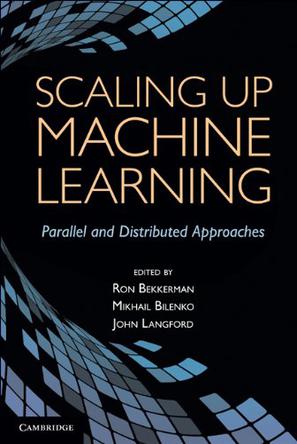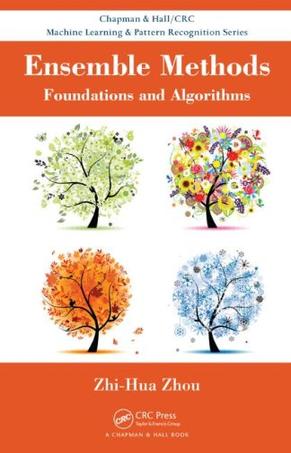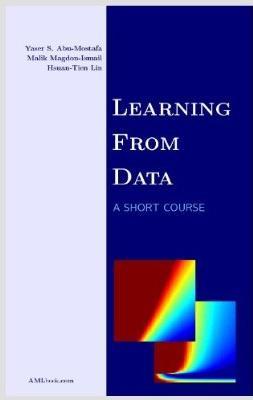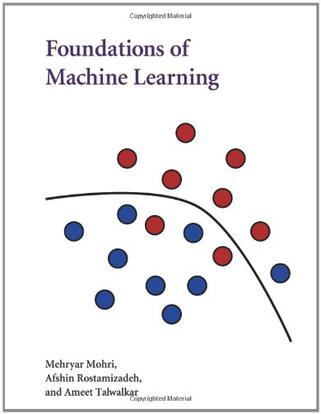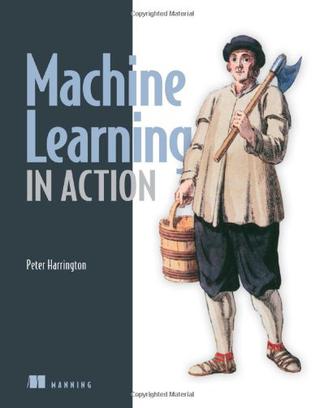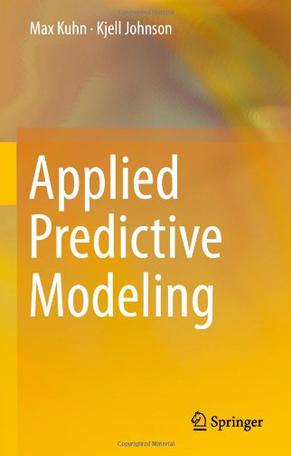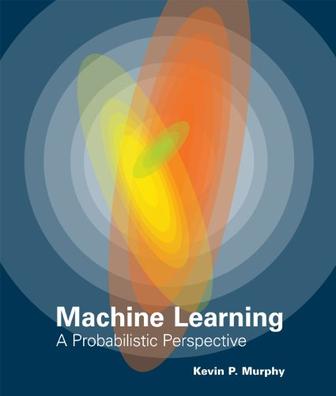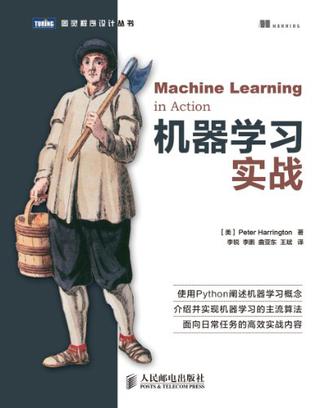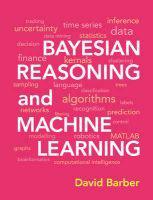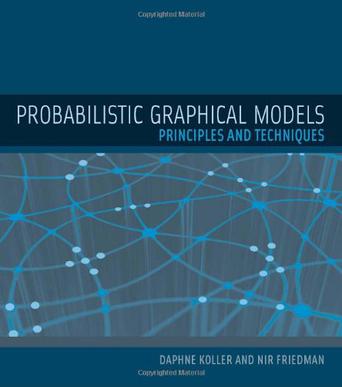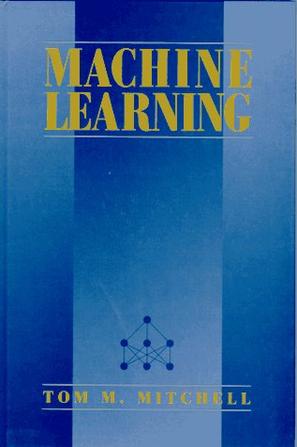欢迎来到相识电子书!
标签:MachineLearning
-
统计学习方法(第2版)
统计学习方法即机器学习方法,是计算机及其应用领域的一门重要学科。本书分为监督学 习和无监督学习两篇,全面系统地介绍了统计学习的主要方法。包括感知机、k 近邻法、朴素贝叶斯法、决策树、逻辑斯谛回归与最大熵模型、支持向量机、提升方法、EM 算法、隐马尔可夫模型和条件随机场,以及聚类方法、奇异值分解、主成分分析、潜在语义分析、概率潜在语义分析、马尔可夫链蒙特卡罗法、潜在狄利克雷分配和 PageRank 算法等。除有关统计学习、监督学习和无监督学习的概论和总结的四章外,每章介绍一种方法。叙述力求从具体问题或实例入手, 由浅入深,阐明思路,给出必要的数学推导,便于读者掌握统计学习方法的实质,学会运用。 为满足读者进一步学习的需要,书中还介绍了一些相关研究,给出了少量习题,列出了主要参考文献。 本书是统计机器学习及相关课程的教学参考书,适用于高等院校文本数据挖掘、信息检索及自然语言处理等专业的大学生、研究生,也可供从事计算机应用相关专业的研发人员参考。
-
Scaling up Machine Learning
This book presents an integrated collection of representative approaches for scaling up machine learning and data mining methods on parallel and distributed computing platforms. Demand for parallelizing learning algorithms is highly task-specific: in some settings it is driven by the enormous dataset sizes, in others by model complexity or by real-time performance requirements. Making task-appropriate algorithm and platform choices for large-scale machine learning requires understanding the benefits, trade-offs and constraints of the available options. Solutions presented in the book cover a range of parallelization platforms from FPGAs and GPUs to multi-core systems and commodity clusters, concurrent programming frameworks including CUDA, MPI, MapReduce and DryadLINQ, and learning settings (supervised, unsupervised, semi-supervised and online learning). Extensive coverage of parallelization of boosted trees, SVMs, spectral clustering, belief propagation and other popular learning algorithms and deep dives into several applications make the book equally useful for researchers, students and practitioners. -
Ensemble Methods
An up-to-date, self-contained introduction to a state-of-the-art machine learning approach, Ensemble Methods: Foundations and Algorithms shows how these accurate methods are used in real-world tasks. It gives you the necessary groundwork to carry out further research in this evolving field. After presenting background and terminology, the book covers the main algorithms and theories, including Boosting, Bagging, Random Forest, averaging and voting schemes, the Stacking method, mixture of experts, and diversity measures. It also discusses multiclass extension, noise tolerance, error-ambiguity and bias-variance decompositions, and recent progress in information theoretic diversity. Moving on to more advanced topics, the author explains how to achieve better performance through ensemble pruning and how to generate better clustering results by combining multiple clusterings. In addition, he describes developments of ensemble methods in semi-supervised learning, active learning, cost-sensitive learning, class-imbalance learning, and comprehensibility enhancement. -
Learning From Data
Machine learning allows computational systems to adaptively improve their performance with experience accumulated from the observed data. Its techniques are widely applied in engineering, science, finance, and commerce. This book is designed for a short course on machine learning. It is a short course, not a hurried course. From over a decade of teaching this material, we have distilled what we believe to be the core topics that every student of the subject should know. We chose the title `learning from data' that faithfully describes what the subject is about, and made it a point to cover the topics in a story-like fashion. Our hope is that the reader can learn all the fundamentals of the subject by reading the book cover to cover. ---- Learning from data has distinct theoretical and practical tracks. In this book, we balance the theoretical and the practical, the mathematical and the heuristic. Our criterion for inclusion is relevance. Theory that establishes the conceptual framework for learning is included, and so are heuristics that impact the performance of real learning systems. ---- Learning from data is a very dynamic field. Some of the hot techniques and theories at times become just fads, and others gain traction and become part of the field. What we have emphasized in this book are the necessary fundamentals that give any student of learning from data a solid foundation, and enable him or her to venture out and explore further techniques and theories, or perhaps to contribute their own. ---- The authors are professors at California Institute of Technology (Caltech), Rensselaer Polytechnic Institute (RPI), and National Taiwan University (NTU), where this book is the main text for their popular courses on machine learning. The authors also consult extensively with financial and commercial companies on machine learning applications, and have led winning teams in machine learning competitions. -
Machine Learning in Action
It's been said that data is the new "dirt"—the raw material from which and on which you build the structures of the modern world. And like dirt, data can seem like a limitless, undifferentiated mass. The ability to take raw data, access it, filter it, process it, visualize it, understand it, and communicate it to others is possibly the most essential business problem for the coming decades. "Machine learning," the process of automating tasks once considered the domain of highly-trained analysts and mathematicians, is the key to efficiently extracting useful information from this sea of raw data. By implementing the core algorithms of statistical data processing, data analysis, and data visualization as reusable computer code, you can scale your capacity for data analysis well beyond the capabilities of individual knowledge workers. Machine Learning in Action is a unique book that blends the foundational theories of machine learning with the practical realities of building tools for everyday data analysis. In it, you'll use the flexible Python programming language to build programs that implement algorithms for data classification, forecasting, recommendations, and higher-level features like summarization and simplification. As you work through the numerous examples, you'll explore key topics like classification, numeric prediction, and clustering. Along the way, you'll be introduced to important established algorithms, such as Apriori, through which you identify association patterns in large datasets and Adaboost, a meta-algorithm that can increase the efficiency of many machine learning tasks. -
Applied Predictive Modeling
This text is intended for a broad audience as both an introduction to predictive models as well as a guide to applying them. Non-mathematical readers will appreciate the intuitive explanations of the techniques while an emphasis on problem-solving with real data across a wide variety of applications will aid practitioners who wish to extend their expertise. Readers should have knowledge of basic statistical ideas, such as correlation and linear regression analysis. While the text is biased against complex equations, a mathematical background is needed for advanced topics. Dr. Kuhn is a Director of Non-Clinical Statistics at Pfizer Global R&D in Groton Connecticut. He has been applying predictive models in the pharmaceutical and diagnostic industries for over 15 years and is the author of a number of R packages. Dr. Johnson has more than a decade of statistical consulting and predictive modeling experience in pharmaceutical research and development. He is a co-founder of Arbor Analytics, a firm specializing in predictive modeling and is a former Director of Statistics at Pfizer Global R&D. His scholarly work centers on the application and development of statistical methodology and learning algorithms. -
Machine Learning
Today's Web-enabled deluge of electronic data calls for automated methods of data analysis. Machine learning provides these, developing methods that can automatically detect patterns in data and then use the uncovered patterns to predict future data. This textbook offers a comprehensive and self-contained introduction to the field of machine learning, a unified, probabilistic approach. The coverage combines breadth and depth, offering necessary background material on such topics as probability, optimization, and linear algebra as well as discussion of recent developments in the field, including conditional random fields, L1 regularization, and deep learning. The book is written in an informal, accessible style, complete with pseudo-code for the most important algorithms. All topics are copiously illustrated with color images and worked examples drawn from such application domains as biology, text processing, computer vision, and robotics. Rather than providing a cookbook of different heuristic methods, the book stresses a principled model-based approach, often using the language of graphical models to specify models in a concise and intuitive way. Almost all the models described have been implemented in a MATLAB software package--PMTK (probabilistic modeling toolkit)--that is freely available online. The book is suitable for upper-level undergraduates with an introductory-level college math background and beginning graduate students. -
机器学习实战
机器学习是人工智能研究领域中一个极其重要的研究方向,在现今的大数据时代背景下,捕获数据并从中萃取有价值的信息或模式,成为各行业求生存、谋发展的决定性手段,这使得这一过去为分析师和数学家所专属的研究领域越来越为人们所瞩目。 本书第一部分主要介绍机器学习基础,以及如何利用算法进行分类,并逐步介绍了多种经典的监督学习算法,如k近邻算法、朴素贝叶斯算法、Logistic回归算法、支持向量机、AdaBoost集成方法、基于树的回归算法和分类回归树(CART)算法等。第三部分则重点介绍无监督学习及其一些主要算法:k均值聚类算法、Apriori算法、FP-Growth算法。第四部分介绍了机器学习算法的一些附属工具。 全书通过精心编排的实例,切入日常工作任务,摒弃学术化语言,利用高效的可复用Python代码来阐释如何处理统计数据,进行数据分析及可视化。通过各种实例,读者可从中学会机器学习的核心算法,并能将其运用于一些策略性任务中,如分类、预测、推荐。另外,还可用它们来实现一些更高级的功能,如汇总和简化等。 -
Bayesian Reasoning and Machine Learning
Machine learning methods extract value from vast data sets quickly and with modest resources. They are established tools in a wide range of industrial applications, including search engines, DNA sequencing, stock market analysis, and robot locomotion, and their use is spreading rapidly. People who know the methods have their choice of rewarding jobs. This hands-on text opens these opportunities to computer science students with modest mathematical backgrounds. It is designed for final-year undergraduates and master's students with limited background in linear algebra and calculus. Comprehensive and coherent, it develops everything from basic reasoning to advanced techniques within the framework of graphical models. Students learn more than a menu of techniques, they develop analytical and problem-solving skills that equip them for the real world. Numerous examples and exercises, both computer based and theoretical, are included in every chapter. Resources for students and instructors, including a MATLAB toolbox, are available online. -
Probabilistic Graphical Models
Most tasks require a person or an automated system to reason--to reach conclusions based on available information. The framework of probabilistic graphical models, presented in this book, provides a general approach for this task. The approach is model-based, allowing interpretable models to be constructed and then manipulated by reasoning algorithms. These models can also be learned automatically from data, allowing the approach to be used in cases where manually constructing a model is difficult or even impossible. Because uncertainty is an inescapable aspect of most real-world applications, the book focuses on probabilistic models, which make the uncertainty explicit and provide models that are more faithful to reality. Probabilistic Graphical Models discusses a variety of models, spanning Bayesian networks, undirected Markov networks, discrete and continuous models, and extensions to deal with dynamical systems and relational data. For each class of models, the text describes the three fundamental cornerstones: representation, inference, and learning, presenting both basic concepts and advanced techniques. Finally, the book considers the use of the proposed framework for causal reasoning and decision making under uncertainty. The main text in each chapter provides the detailed technical development of the key ideas. Most chapters also include boxes with additional material: skill boxes, which describe techniques; case study boxes, which discuss empirical cases related to the approach described in the text, including applications in computer vision, robotics, natural language understanding, and computational biology; and concept boxes, which present significant concepts drawn from the material in the chapter. Instructors (and readers) can group chapters in various combinations, from core topics to more technically advanced material, to suit their particular needs. -
Machine Learning
This book covers the field of machine learning, which is the study of algorithms that allow computer programs to automatically improve through experience. The book is intended to support upper level undergraduate and introductory level graduate courses in machine learning. -
统计学习方法
《统计学习方法》是计算机及其应用领域的一门重要的学科。《统计学习方法》全面系统地介绍了统计学习的主要方法,特别是监督学习方法,包括感知机、k近邻法、朴素贝叶斯法、决策树、逻辑斯谛回归与最大熵模型、支持向量机、提升方法、EM算法、隐马尔可夫模型和条件随机场等。除第1章概论和最后一章总结外,每章介绍一种方法。叙述从具体问题或实例入手,由浅入深,阐明思路,给出必要的数学推导,便于读者掌握统计学习方法的实质,学会运用。为满足读者进一步学习的需要,书中还介绍了一些相关研究,给出了少量习题,列出了主要参考文献。
热门标签
下载排行榜
- 1 梦的解析:最佳译本
- 2 李鸿章全传
- 3 淡定的智慧
- 4 心理操控术
- 5 哈佛口才课
- 6 俗世奇人
- 7 日瓦戈医生
- 8 笑死你的逻辑学
- 9 历史老师没教过的历史
- 10 1分钟和陌生人成为朋友


